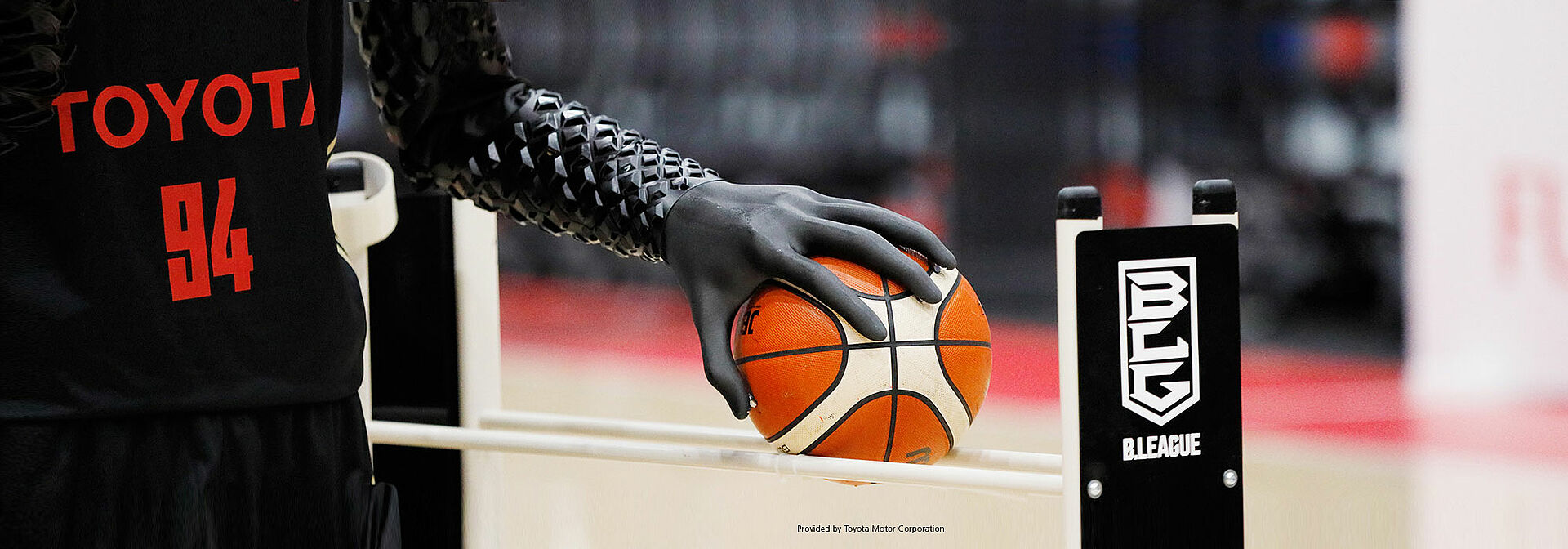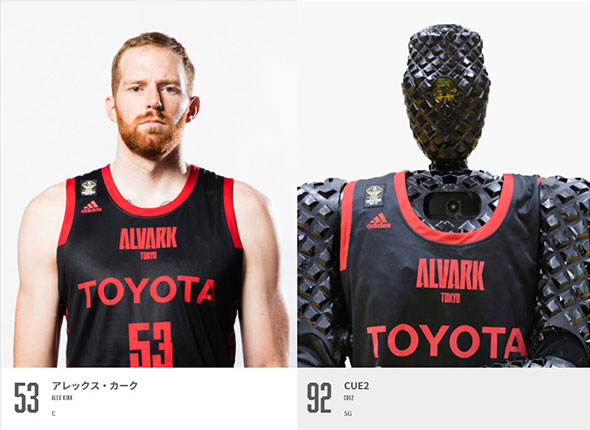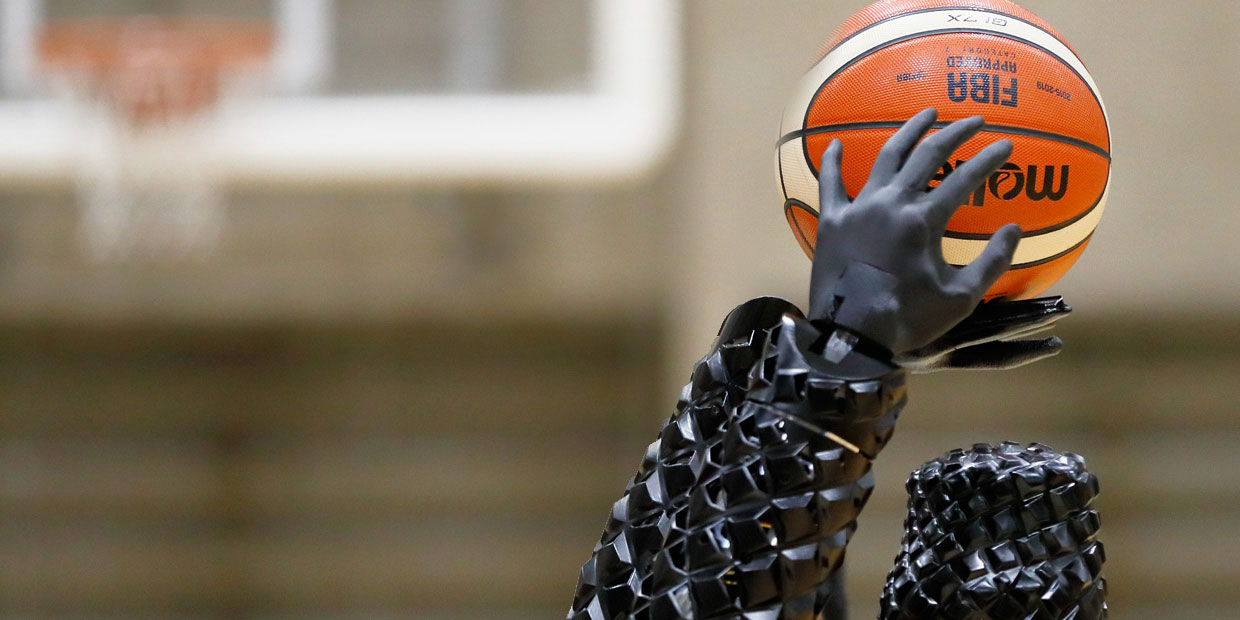In fact, the members of the development team were complete amateurs when it came to robot development and artificial intelligence. So they studied together from scratch in their free time, and through trial and error developed the first generation of CUE, which successfully made a free throw in the autumn of the same year.
The project received a lot of positive feedback from both inside and outside Toyota, and the company decided to continue it as an official company project. Six months after the development of the first generation of CUE, it was back with a further evolution as CUE2. This time, the robot surprised everyone by standing on its own two feet and shooting from the three-point area. The challenge of the CUE development team went on with CUE3 and CUE4.
High hurdles for the CUE project
The CUE project has faced a number of high hurdles. First, the robot must measure the distance from its position to the hoop, calculate the trajectory of the ball to score, and figure out how it should throw the ball. And to execute it, an accurate shooting motion is required. Coordinated control of all motors installed in each joint and the precise control of each motor (position, speed, and torque) are required to produce the accurate shooting motion. The CUE is designed based on the body shape of a basketball player, and the size of the motors installed in its joints is limited, so it is impossible to install large motors. Therefore, in order to generate a force large enough to shoot with a small motor, it is necessary to amplify the force by the coordinated control of the motors installed in each joint, including the legs, lower back, and arms, and transfer the force to the ball during the shooting motion.
In other words, a small error in the position, speed, or torque control of each motor during the shooting motion will cause a deviation in the motion, making it impossible to score. It is thus extremely important to prevent errors. Since the distance to a hoop varies depending on where the robot stands when aiming the shot, subtle adjustment of force is essential. Each motor must have the characteristics of high responsiveness, compact size, and high power in order to execute movement according to a precise movement profile. The FAULHABER motors played an active role in overcoming this problem.
CUE2 attempted to shoot three-pointers
While the first generation of CUE successfully scored from the free-throw line, CUE2 was improved to stand on its own two feet and shoot from the three-point line, 6.75 meters from the hoop. As the shooting distance increases, the slightest error in the shooting motion can have a significant impact. So the slightest deviation in motion will result in a failure to score from the three-point line, which is about 2.5 meters farther than the free-throw line.
In the development of CUE2, high motor output was a major issue, and FAULHABER's brushless DC servomotor, the 4490 B series was chosen as one of the candidates in terms of size and power. In the shooting motion, multiple motors are simultaneously controlled, and the motors are forced to work harder in order to generate a large amount of torque instantaneously. Despite the difficulty, the results of the thermal simulation based on the operation profile of FAULHABER confirmed that the CUE2 had sufficient heat dissipation design, and this motor was judged to be able to withstand the use.
In the beginning, the parameters of the controller were not adjusted properly, and the motors sometimes became damaged. Yet, the project reached the stage where CUE2 successfully made three-point shots, and its performance was shown in a halftime show at a Japanese professional basketball game.
Evolution goes on to CUE3 and CUE4
CUE3 was developed based on a new concept: When the robot catches the ball in its left hand, it gets into shooting position and attempts to score. When CUE3 showed this performance, the team received an offer to challenge the Guinness World Records.
In preparation for the Guinness World Record attempt, CUE initially needed about a minute of preparation time prior to a shot, after further improvements, it was able precisely shoot at a rate of one shot for every 12 seconds.
When the number of consecutive shots exceeded 1,000, the goal of the challenge was set to 2,020 shots in reference to the Tokyo Olympics and Paralympics Games. Six hours and 35 minutes after the start of the challenge, the moment of joy finally arrived.
CUE3 was awarded the Guinness World Record for "the most consecutive basketball free throws by a humanoid robot (assisted): 2,020 shots.
Following CUE3, which set a Guinness World Record for free throws, CUE4's goal was set to challenge the Three-Point Contest. The Three-Point Contest is a game in which 25 balls in total are placed five each at five shooting spots along the three-point line, and the player competes for the number of successful shots within the designated time. CUE4 quickly moved to the shooting spot, grabbed the ball, got into shooting position, and made three-point shots, which excited the audience at the event. CUE4 has the new function of grabbing the ball, using FAULHABER's new outer rotor brushless flat motor, the 4221 BXTH series, which FAULHABER introduced recently. FAULHABER looks forward to the future evolution of CUE as it continues to take on new challenges.




